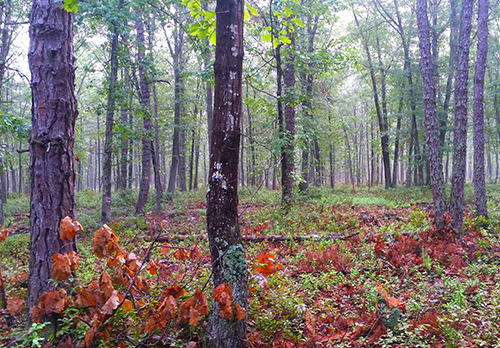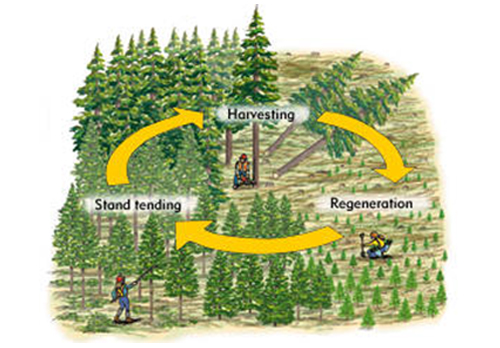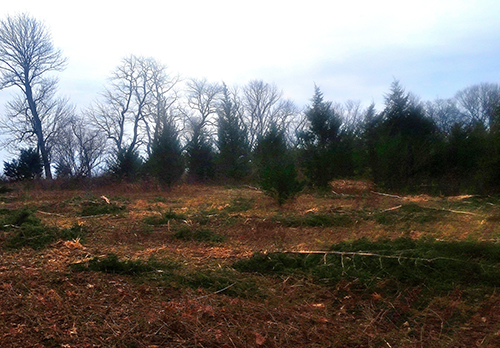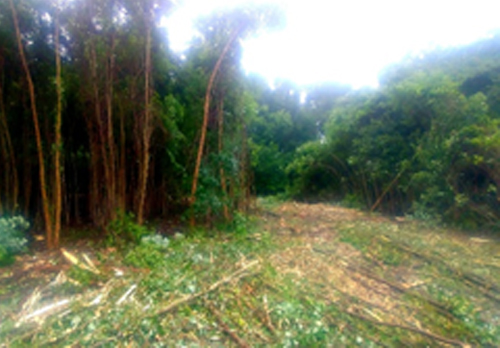
Pagodin’s has become a leader at the forefront of forestry management services working with the New Jersey Departments of Forestry, Wildlife, and Forest Fire. Working hand in hand with the Forestry Service, we have implemented several large area projects in the state of New Jersey. In each of these areas we have utilized silviculture and Stoddard Neel techniques to work on hundreds of acres. This minimizes the spread of wildfire while promoting the mature growth areas of the forest. Additionally, it effectively reduces invasive species, as well as, opening up specialized habitat areas for a myriad of wildlife. These test areas where painstakingly monitored by the New Jersey Forestry Service, biologists at NJ Fish & Wildlife, and the NJ Forest Fire Service to monitor damage to remaining species, terrain, proper implementation, and the overall benefit in the areas tested. The success of these test areas is plainly visible as you enter the canopies; the forests are thriving in the test areas and wildlife species abound, even thrive.


We utilize well developed strategies utilized by forestry services throughout the United States. By removal of unwanted undergrowth and ladder fuels on large tracts of land, we effectively reduce the damage caused by wildfires spreading to the top of the canopies. This can permanently devastate a forest or large land area. Additionally, we create extensive fire breaks that ultimately create natural food strips or other habitats for small wildlife. This promotes food sources for raptors, pray animals, as well as new growth areas for deer and other game animals to feed on. This process has been highly refined to facilitate mutually beneficial fire management techniques that will add to the preservation of state parks, forests and other large land areas.


Silviculture is the nuts and bolts of maintaining a forest. It is far more than just cutting of the trees. Teams of foresters, arborists and biologists will evaluate a large stand, the amount of light, water, invasive species, and many other factors. Stoddard Neel is a technique used to keep the stand that is being thinned more natural in appearance than groomed and maintains natural habitats in the selected stand. Having a thorough understanding of these practices can make the difference between a healthy forest, and one that is going to disappear due to neglect.

Landowners assume that wildlife will remain on their property indefinitely, however, some areas do not provide for species needs and may not be suitable for the wildlife they have chosen to nurture. Knowing what species you are working with and having a clear set of objectives along with knowing the requirements of that species are quintessential. Change is continually taking place in nature. Some successional habitats such as grasslands, change dramatically from year to year and require maintenance. Even mature forests require maintenance. Removal of dead trees and intermediate growth while maintaining ground cover may be essential for larger animals.
At Pagodin’s, we understand the need to maintain wildlife areas as well as maintaining the forests or grasslands for the spread of fire or procreation of endangered species. A complex understanding of eco-systems and forestry blended with wildlife conservation is key. We have maintained raptor, pinelands rattler preserves as well as numerous other species and have operators that have worked in eco-sensitive areas and understand the need to minimize damage to the surroundings while performing the necessary maintenance.

Invasive species often grow unchecked on many properties. These species are not native to the U.S. or the State of New Jersey and often wreak havoc on native species. At Pagodin’s you will find knowledgeable arborists who understand the nature and species involved, and we can implement a plan to rid this unwanted vegetation allowing reclamation of areas for desired species or land use. We utilize eco-friendly techniques such as (IVM) or Integrated Vegetation Management which reduces the need for pesticides, and herbicides, allowing for more diverse native vegetative species to thrive.
Here in NJ, there are hundreds of landowners who participate in Forestry Stewardship Plans. At Pagodin’s we have assisted landowners after they obtain these plans with the long-term maintenance that is required by the State of New Jersey. These plans can reduce your property taxes while maintaining wooded, or wet-land areas that benefit both the wildlife, and the environment. Knowing the requirements and obtaining the plans is essential, however, the long term site management is equally as important. For more information on obtaining the plans, click on the link provided. When you are ready to begin the work on the property, let us help you.

Vegetation management is a critical component to maintaining forests and large tracts of land. The implementation of techniques such as Integrated Vegetation Management or (IVM) utilizes silviculture, Reforestation, and Restoration to maintain these parcels without the industrial use of herbicides. These eco-friendly practices reduce damage by wildfires, mass spread of devastating insect populations, and invasive species growth to facilitate more mature and healthy growth areas. Removing invasive species provides more open area for native species to thrive and provide food for both native plants and animals. Restoration after silviculture and evasive species removal allows for new growth of desired species to establish without fighting for nutrients, water and sunlight in overgrown areas.

Timber harvesting is a carefully managed process that allows for the sustainable harvesting of valuable lumber without desecrating the surrounding areas. Many companies will come in and hack through an area damaging the non-valuable trees and growth which not only causes an eye sore, but can be devastating to the remaining area. Mature growth takes many years and responsible harvesting is essential to maintaining a viable healthy tract. If properly done there will be minimal disturbance to uncut trees with select removal instead of clearing that promotes growth to less mature trees while maintaining some mature growth. It is crucial to carefully choose a harvester that is ISA certified and has a well-established history of proper harvesting techniques.